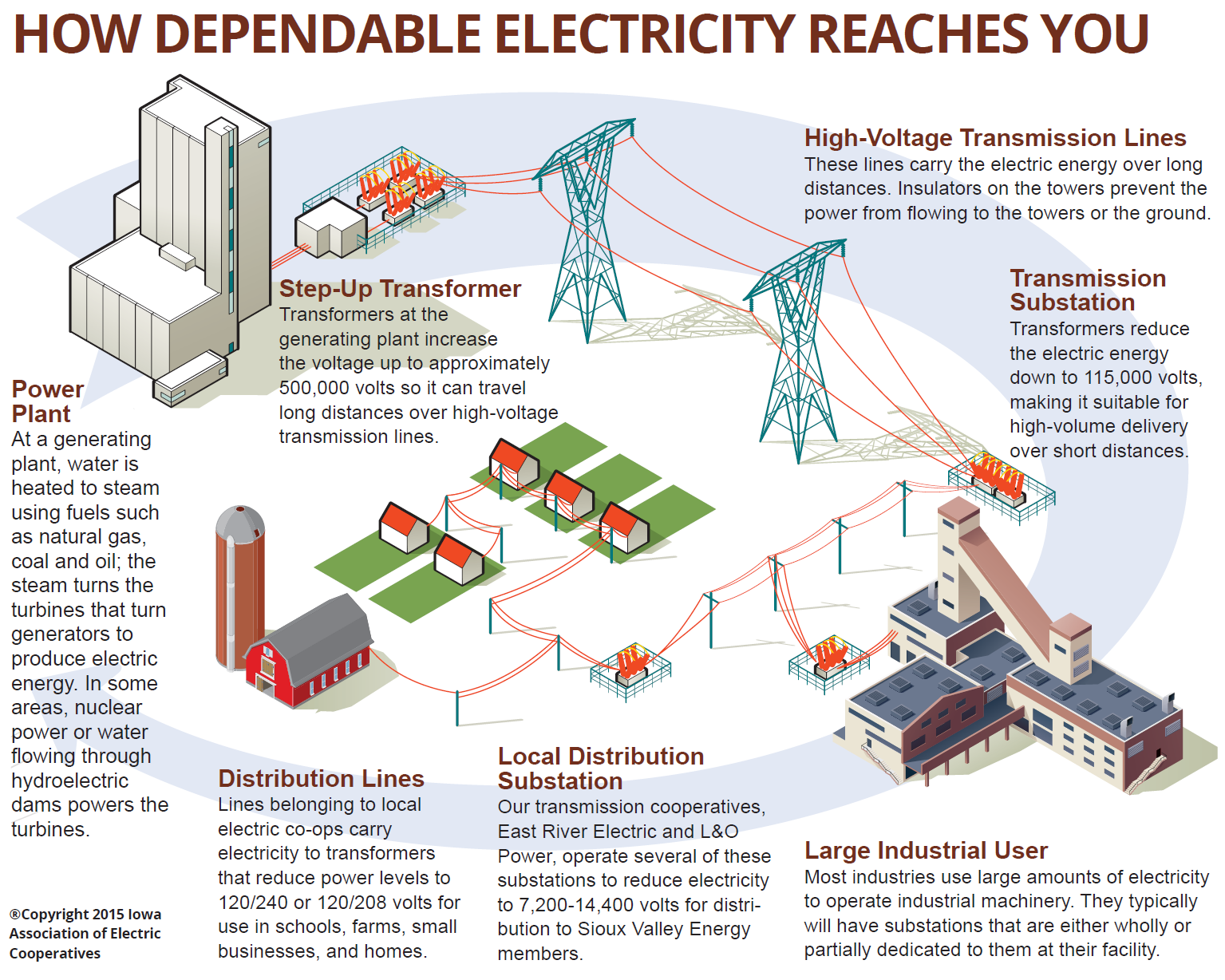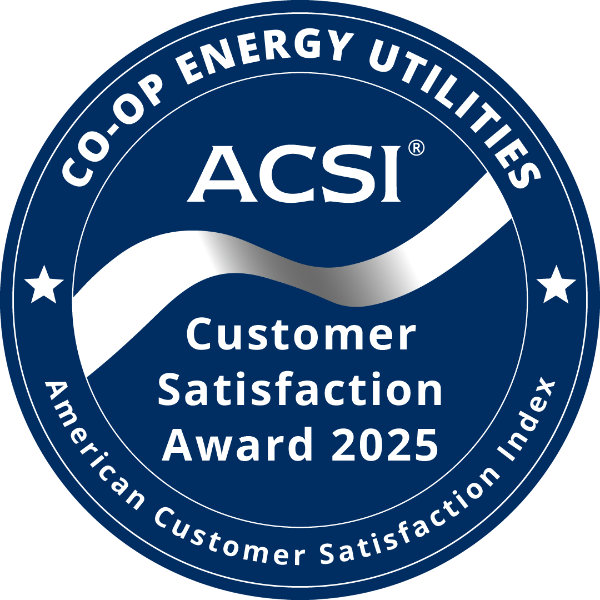Manager's Message: Four Key Drivers of Basin Electric’s Rate Increase
Electricity 101: How is Electricity Produced and How Does it Get to Me?
It’s named after those little pieces of atoms called electrons, and that’s the place to start in understanding how power plants make something that reliably lights your home with the flip of a switch.
Getting all those electrons to march together inside a wire has been described as one of civilization’s greatest and most complex engineering feats.
The journey of electricity begins at power plants. Just about all of your electricity starts with the scientific phenomenon that spinning a magnet inside a coil of wires will generate electricity. So, deep inside most power plants are large turbines that are turned in different ways: falling water at a hydroelectric dam; burning coal or natural gas at a fossil fuel station; atomic energy at a nuclear power plant; or the rotating blades of a wind turbine. One exception is solar energy, which uses materials that produce electricity when they’re activated by sunlight.
Sioux Valley Energy receives power from its wholesale generation and transmission (G&T) cooperative, Basin Electric Power Cooperative, and the Western Area Power Administration.
To get the electricity from the generating source to you, there needs to be a transportation system, which is where Sioux Valley Energy’s transmission cooperatives, East River Electric Power Cooperative and L&O Power Cooperative, come in.
Learn about the three-tiered power system
High-voltage transmission lines, owned by our power suppliers, act as the highways for electricity, transporting power over long distances. These lines are supported by massive towers and travel through vast landscapes, connecting power plants to electric substations.
Substations, also owned by our power suppliers, are like pit stops along the highway, where the voltage of electricity is adjusted. They play a crucial role in managing power flow and ensuring that electricity is safe for use in homes and businesses.
Once the electricity is reduced to the proper voltage, it travels through distribution power lines which are owned by Sioux Valley Energy, like the smaller ones you typically see on the side of the road. Distribution lines carry electricity from substations to homes, schools and businesses. Distribution transformers, which look like metal buckets on the tops of power poles or large green boxes on the ground, further reduce the voltage to levels suitable for household appliances and electronic devices.
After traveling through transformers, electricity reaches the member – to power everyday life.



